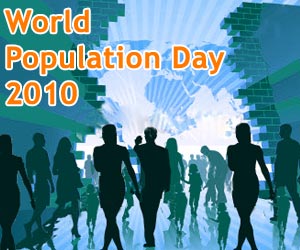The Earth's population will reach seven billion this year, and climb to nine billion by 2050, peak at 9.5 billion, stabilize temporarily, and then decline, the United Nations has predicted.

What could happen depends on trends in fertility and mortality-and both variables are complex and not easy to forecast, according to American Association for the Advancement of Science vice president John Bongaarts.
With respect to fertility, some analysts assume that the very low levels of childbearing now prevailing in Southern and Eastern Europe, where women have fewer than two children on average, will continue in those countries and spread to other parts of the world.
But scholars have different expectations of how rapidly and widely that trend will unfold.
If fertility remains higher than the UN projects the world population could exceed 10 billion in 2100.
In terms of mortality, pessimists say that life spans in developed countries are close to the biological limit.
Advertisement
If the optimists are right, the world's population could also exceed 10 billion in 2100.
Advertisement
"Almost all of the growth in world population will occur in poor countries, particularly in Africa and South Asia," said Bongaarts.
"But if we make much larger investments in family planning right now, the number of people could be closer to 8 billion. Such an investment would have a very beneficial impact on human welfare and any environmental issue we care about," he added.
Source-ANI









